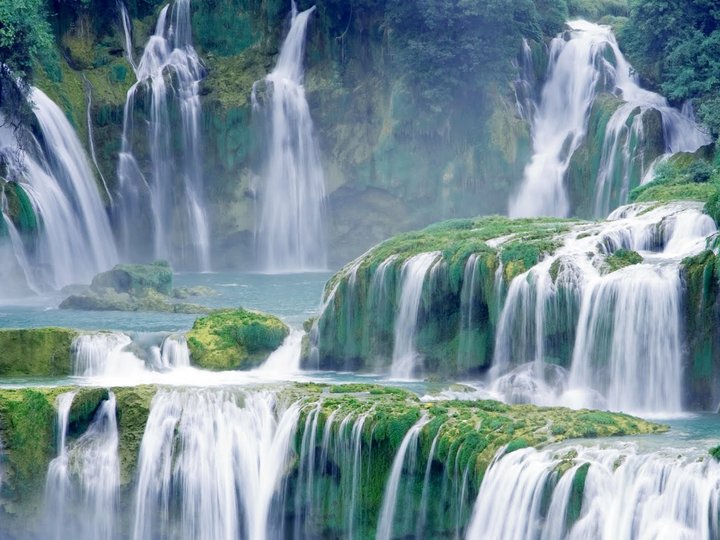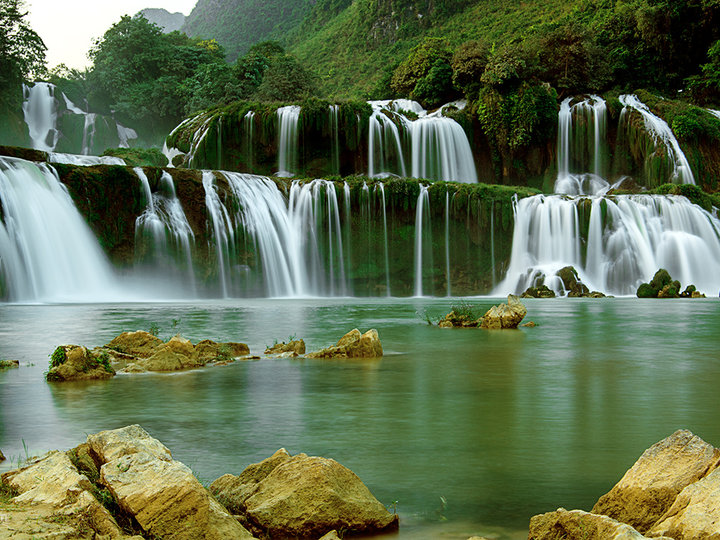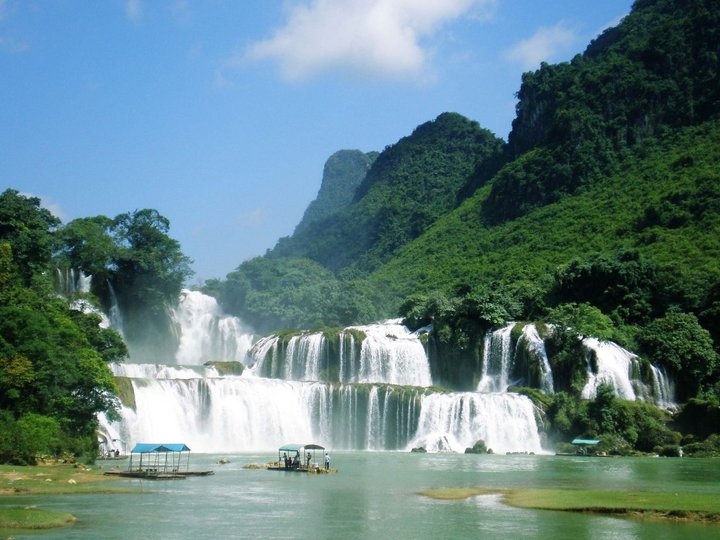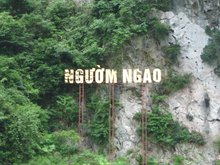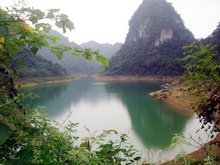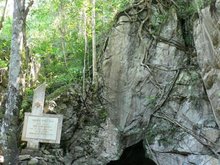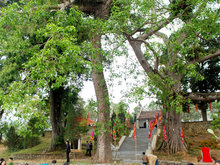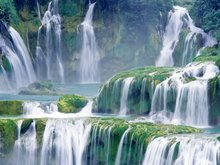Ban Gioc Waterfalls
Ban Gioc Waterfalls are located 80 kilometres north of Cao Bang at the Vietnam-China International Border. It originates from the Quy Xuan River and falls over a height of 30 metres and is 300 metres wide At the top, the waterfall is seen in three parts divided by rocks and trees.
As the water falls down the cliff and merges with sunlight, a seven-coloured rainbow formation is witnessed. Many green trees and flowers that perfume the air are located at the base of the fall.
The Ban Gioc waterfall area at the international border between Vietnam and China is stated to be "among areas having a borderline defined on rivers and streams". It has been clarified by the Head of the Border Committee that the borderline of the fall shall be as fixed along the median of the main flow which shall be done jointly by both sides. Even though in Vietnam the two falls are considered as one fall with the name Ban Gioc, the physical fact is that the water fall is named under two ownership divisions namely
This water fall is the 4th largest waterfall along a national border in the world, the other three are Iguazu Falls, Victoria Falls, and Niagara Falls, in that order. It was also one of the crossing points for China's army during the brief Sino-Vietnamese War. Nearby there is the Tongling Gorge accessible only through a cavern from an adjoining gorge. Rediscovered only recently, it has many species of endemic plants, found only in the gorge. This cave was a hideout for the local bandits whose treasure is occasionally still found in the cliff-side caves. Ban Gioc Fall is also famous for the fish species "tram huong." During the 1920s, this was a hunting and fishing location for the French who built cottages for the purpose.

